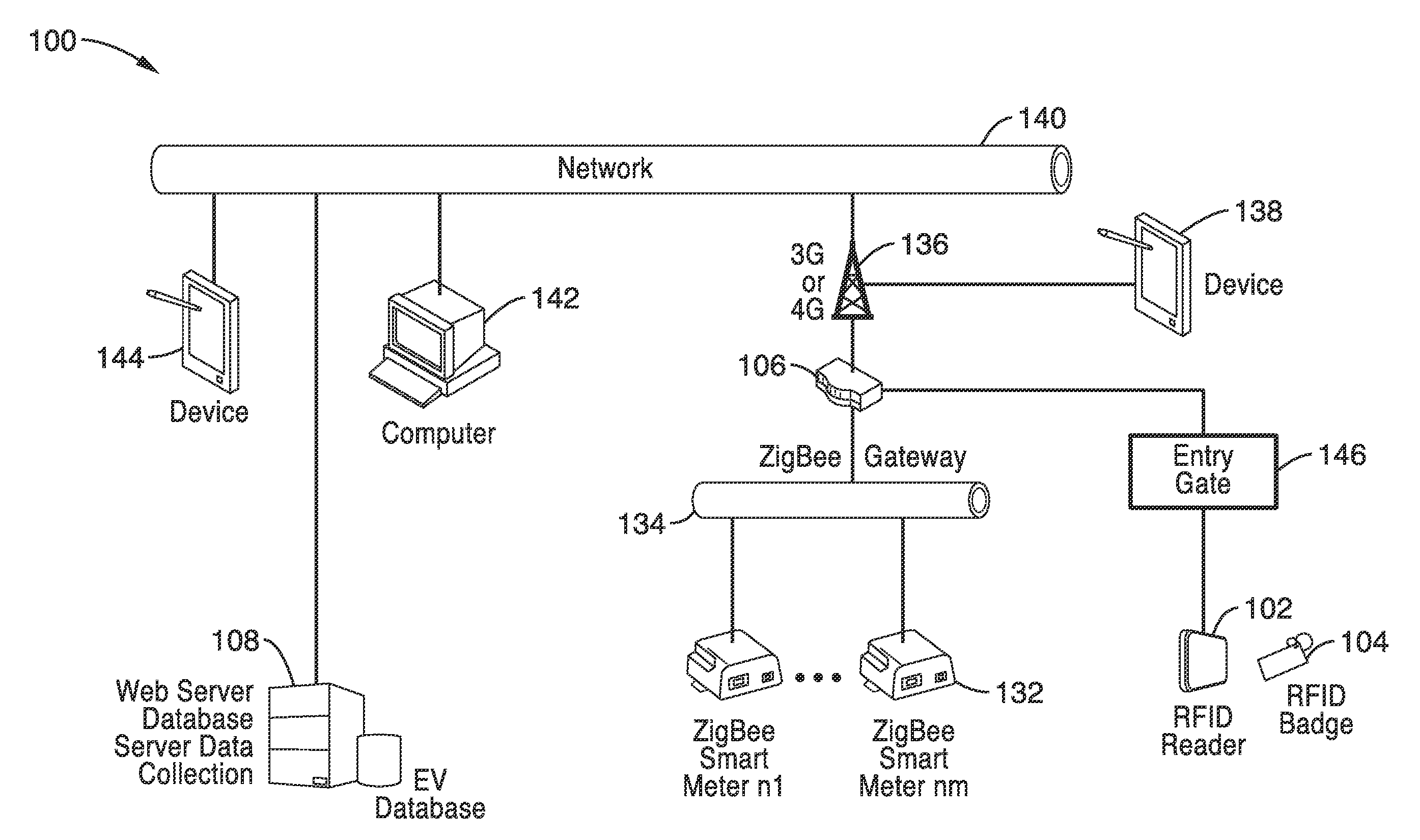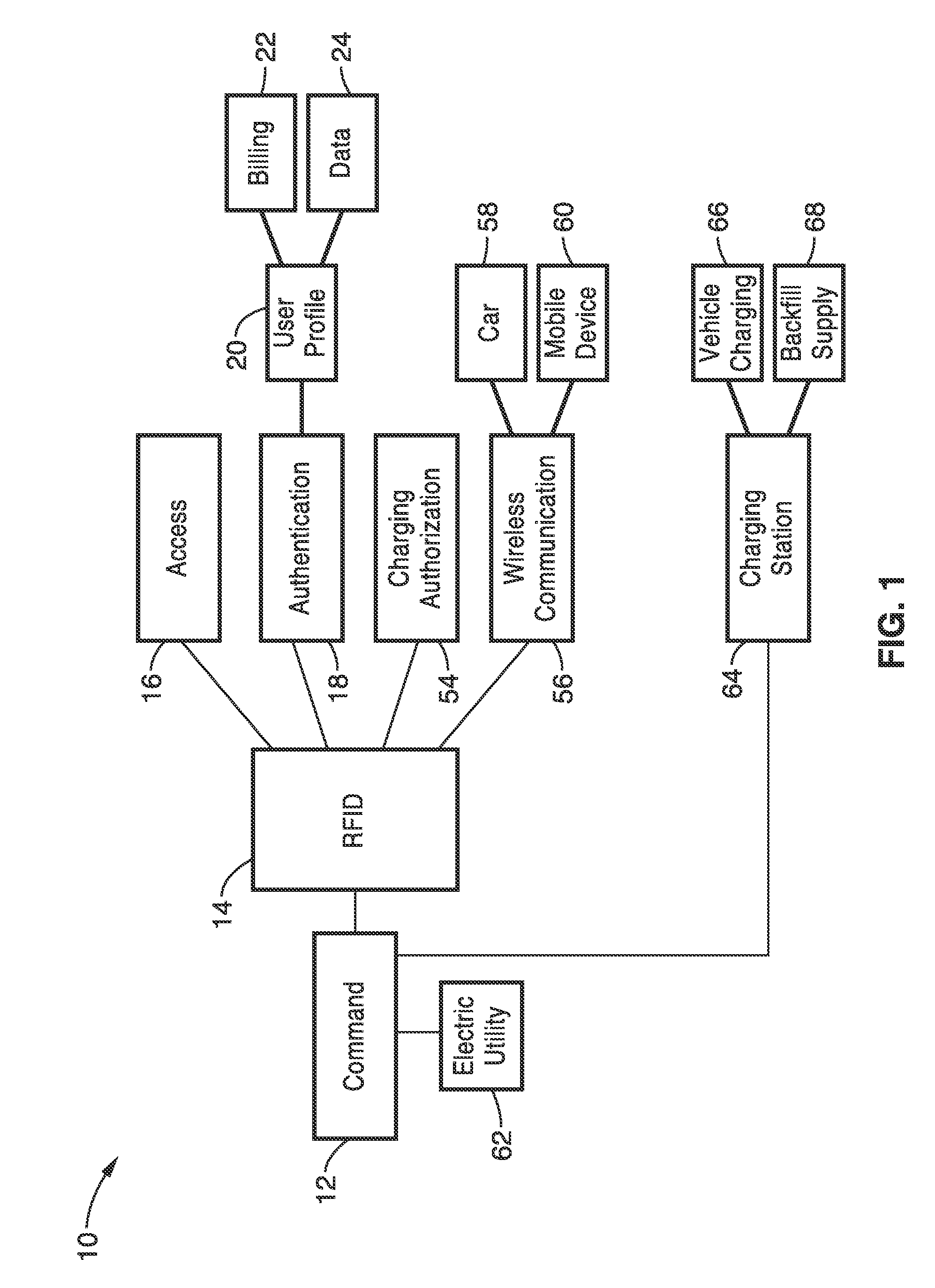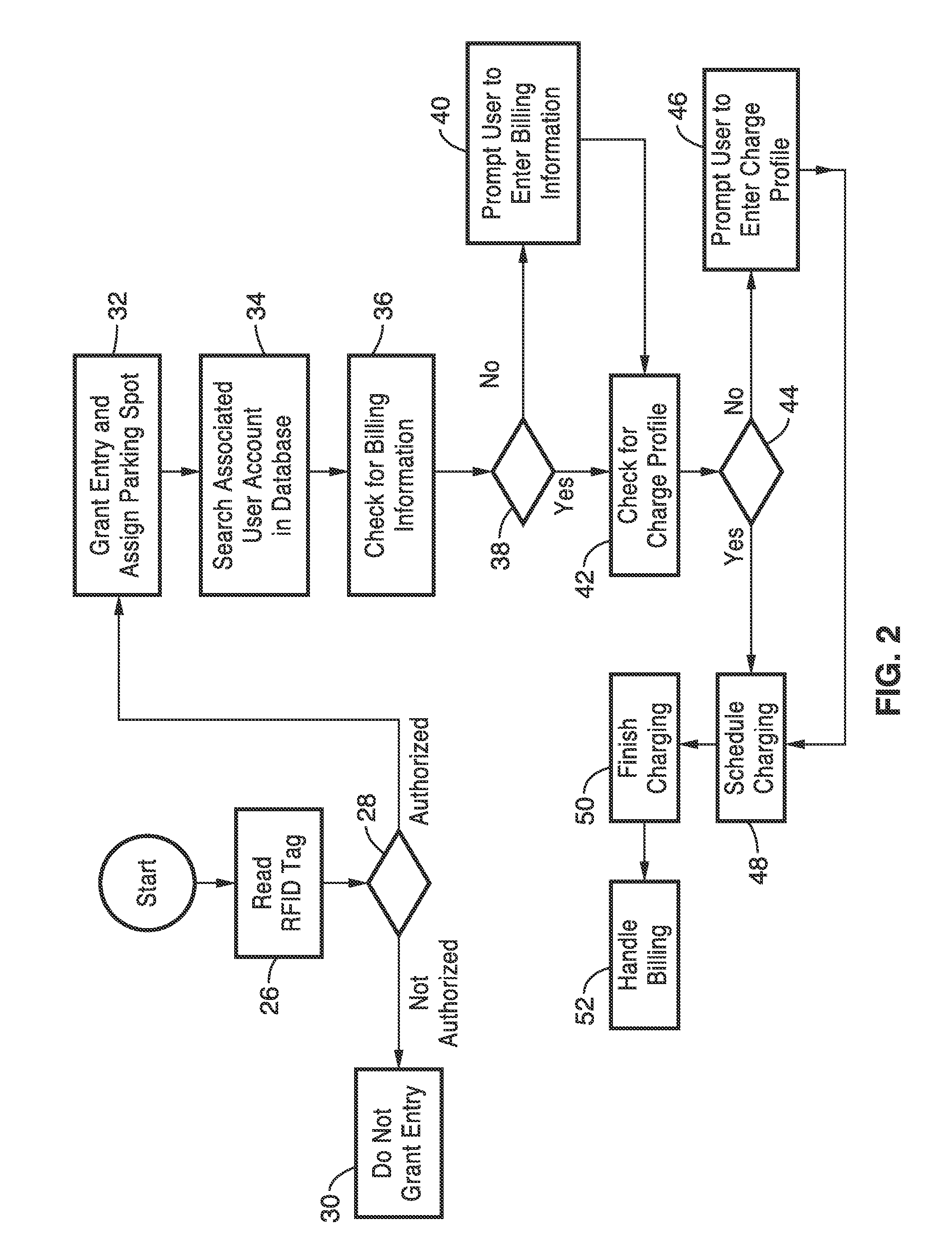Intelligent electric vehicle charging system
- Summary
- Abstract
- Description
- Claims
- Application Information
AI Technical Summary
Benefits of technology
Problems solved by technology
Method used
Image
Examples
example 1
[0065]To demonstrate the functionality of the system, network architecture for EV charging with RFID in a university campus setting was created. The network 100 shown in FIG. 3 was used to test the system elements. Although only one local parking garage network is shown in FIG. 3, it will be understood that many different garage networks can be associated and controlled by control computer programming.
[0066]In the embodiment 100 shown in FIG. 3, the EV is identified at an access point to a garage or lot by way of an RFID reader 102 and an RFID tag or badge 104 that is either attached to the EV or a conventional RFID badge. An RFID programming module and RFID reader 102 at access gate 146 is used to read an EV user's RFID badge 104 and evaluate the available inventory of charging stations. Data from the RFID reader 102 is sent to the command server 108 through gateway 106.
[0067]Referring also to FIG. 4A and FIG. 4B, the RFID tag or tags 104 are used to grant access to the garage and ...
example 2
[0079]To further demonstrate the functionality of the system, a control circuit was designed and tested. Turning now to FIG. 5 and FIG. 6, a microcontroller circuit diagram and block diagram are schematically shown. Generally, a wireless ZigBee or Wi-Fi mesh network is established that is connected to a control server through a gateway.
[0080]In this embodiment, an Arduino R3 microcontroller 200 with associated RFID and ZigBee devices and signal flow is generally shown. The microcontroller 200 receives input from the RFID reader 202. A ZigBee network processor 204 is also operably coupled to the microcontroller 200. The processor 204 is in wireless communication with at least one other ZigBee network processor 206. Although only end device processor 204 is shown associated with coordinator controller 206, many devices can be used to form mesh network. The mesh network is connected to a gateway 208 that preferably communicates through the Internet 210 through Wi-Fi / 3G or LAN systems w...
PUM
 Login to View More
Login to View More Abstract
Description
Claims
Application Information
 Login to View More
Login to View More - R&D
- Intellectual Property
- Life Sciences
- Materials
- Tech Scout
- Unparalleled Data Quality
- Higher Quality Content
- 60% Fewer Hallucinations
Browse by: Latest US Patents, China's latest patents, Technical Efficacy Thesaurus, Application Domain, Technology Topic, Popular Technical Reports.
© 2025 PatSnap. All rights reserved.Legal|Privacy policy|Modern Slavery Act Transparency Statement|Sitemap|About US| Contact US: help@patsnap.com



